17-4. Indeed there should not be any
permanent stop in the recyclings of life. The ancient Babylonians
pointed to Aldebaran as a Furrow in the night sky, I
guess in order to suggest a source for the next generation.

 |
 |
|
Eb7-13 (13 *
43 = 559) |
Eb7-14 (326 +
234 = 560 = 80 weeks) |
|
Erua oona mea ki te puoko |
ka tupu te rakau |
|
Rakau, raau,
medicine, remedy, drug.
Ra'a'u, scratch on the skin. Rakau, a
plant. Râkau, goods, property. Vanaga. 1.
Wood; rakau ta, cudgel, stick. P Pau.: rakau, tree, to dress a wound. Mgv.:
rakau, wood, timber, a tree; medicine, a
remedy; an object. Mq.: ákau, wood, tree.
Ta.: raáu, id. 2. Medicine, remedy,
potion, ointment, furniture, any precious
object, resources, baggage, riches, heritage,
dowry, merchandise, treasure, wealth; rakau
hakaneinei, purgative; rakau nui,
rich, opulent; rakau kore, poor, beggar,
indigent, miserable, an inferior; hakakamikami ki te rakau, to impoverish;
rakau o te miro, ballast. Mq.: akau,
anything in general. The medicine sense is
particularized in Tonga, Nukuoro, Hawaii,
Tahiti, Mangareva, Paumotu. In no other speech
does wood stand so fully for wealth of
possessions, but it will be recalled that Rapanui is destitute of timber and depends
wholly upon driftwood. Churchill. |
|
INVISIBLY
CLOSE TO THE SUN: |
|
May 27 (83 + 64 = 147) |
May 28 (148) |
|
MARCH 24 (83) |
JULIAN
EQUINOX |
|
No star listed (67) |
Rohini-4 (The Red One)
/
Pidnu-sha-Shame-4 (Furrow
of Heaven)
/
ANA-MURI-2 (Rear pillar -
at the foot of which was the place for
tattooing)
ALDEBARAN = α Tauri
(68.2),
THEEMIN = υ² Eridani
(68.5)
SPICA (α
Virginis) |

... This pot depicts one of the
Hero Twins (One-Ahaw in the Classic texts and
One-Hunaphu in the K'iche' Popol Vuh) and a great
bird who is trying to land in a huge ceiba tree
heavy with fruit. This mythical bird is Itzam-Yeh,
Classic prototype of Wuqub-Kaqix,
'Seven-Macaw', of Popol Vuh fame. In that story, in
the time before the sky was lifted up to make room
for the light, the vainglorious Seven-Macaw imagined
himself to be the sun. Offended by his pride, the
Hero Twins humbled him by breaking his beautiful
shining tooth with a pellet from their blowgun. This
pot shows One-Ahaw aiming at the bird as he swoops
down to land in his tree. As Itzam-Yeh lands
on his perch, the text tells us he is 'entering or
becoming the sky' ... |
|
→ VISIBLE
CLOSE TO THE FULL MOON: |
|
Al Kalb-16 (The Heart)
/
Jyeshtha-18 (Eldest)
/
ANA-MUA-1 (Entrance
pillar)
ANTARES =
α
Scorpii
(249.1),
MARFIK (Elbow) =
λ
Ophiuchi,
φ
Ophiuchi (249.5), ω
Ophiuchi (249.8)
Nov 25 (329, *249 = *67 + *182)
SEPTEMBER EQUINOX |
γ
Apodis (250.1),
σ
Herculis (250.3),
θ
Tr.
Austr. (250.6), τ Scorpii (250.7)
Nov 26 (148 +
182 = 330)
SEPT 23 (266
= 330 - 64) |
|
... From Aleph to Taf'
describes something from beginning to end; the
Hebrew equivalent of the English 'From A to Z ...
Tav is the last letter of the Hebrew word
emet, which means truth. The midrash explains
that emet is made up of the first, middle,
and last letters of the Hebrew alphabet (Aleph,
Mem, and Tav...).
Sheqer (falsehood), on the other hand, is
made up of the 19th, 20th, and 21st (and
penultimate) letters. Thus, truth is
all-encompassing, while falsehood is narrow and
deceiving. In Jewish mythology it was the word
emet that was carved into the head of the
Golem which ultimately gave it life. But when
the letter 'aleph' was erased from the Golem's
forehead, what was left was 'met' - dead. And
so the Golem died ...
 |
And in Virgo they had planted the planet sign of Mercury between Furrow and Frond,
which, I think, means Mercury represented the 'spittle' of the old (dead, met)
which was the origin of the new
(emet).
Presumably they had observed the culmination of Spica when the Sun was at
Aldebaran.

|
1 |
Ana-mua,
entrance pillar |
ANTARES, α Scorpii |
Nov 25 (329) |
SEPT 22 (EQUINOX) |
|
2 |
Ana-muri,
rear pillar (at the foot of which
was the place for tattooing) |
ALDEBARAN, α Tauri |
May 28 (148) |
MARCH 25 (EQUINOX) |
|
3 |
Ana-roto,
middle pillar |
SPICA, α Virginis |
May 28 (148) |
MARCH 25 |
The 'bird' (manu) with a 'single eye' (mata
etahi), which ideally could be seen close to the
right ascensiion line at the
Full Moon in November 27 (*251.0) had anciently
been at *187 (= 251 - 64) which ought to be at glyph
number 561 = 3 * 187.
 |
 |
|
Eb7-15
(561 → 3 * 187) |
Eb7-16
(236 → 8 * 29½) |
|
to manu mata etahi |
te toga |
|
... The correspondence between the winter
solstice and the kali'i rite of the
Makahiki is arrived at as follows:
ideally, the second ceremony of 'breaking
the coconut', when the priests assemble at
the temple to spot the rising of the
Pleiades, coincides with the full moon (Hua
tapu) of the twelfth lunar month (Welehu). In
the latter eighteenth century, the Pleiades
appear at sunset on 18 November. Ten days
later (28 November), the Lono effigy
sets off on its circuit, which lasts
twenty-three days, thus bringing the god
back for the climactic battle with the king
on 21 December, the solstice (= Hawaiian 16
Makali'i). The correspondence is
'ideal' and only rarely achieved, since it
depends on the coincidence of the full moon
and the crepuscular rising of the Pleiades
...
Ue. Uéué,
to move about, to flutter; he-uéué te
kahu i te tokerau, the clothes flutter
in the wind; poki oho ta'e uéué, obedient child. Vanaga. 1. Alas. Mq.:
ue,
to groan. 2. To beg (ui).
Ueue:
1. To shake (eueue);
kirikiri
ueue, stone for sling. PS Pau.:
ueue,
to shake the head. Mq.:
kaueue,
to shake. Ta.:
ue, id. Sa.:
lue,
to shake, To.:
ue'í, to shake, to move;
luelue,
to move, to roll as a vessel in a calm. Niuē:
luelue, to quake, to shake. Uvea: uei, to shake;
ueue, to move.
Viti: ue, to move in a confused or
tumultous manner. 2. To lace. Churchill.
Toga.
1. Winter season. Two seasons used to be
distinguished in ancient times: hora,
summer, and toga, winter. 2. To lean
against somehing; to hold something fast;
support, post supporting the roof. 3. To
throw something with a sudden movement. 4.
To feed oneself, to eat enough; e-toga
koe ana oho ki te aga, eat well first
when you go to work. Vanaga. 1. Winter. P
Pau., Mgv.: toga, south. Mq.: tuatoka, east wind. Ta.:
toa,
south. 2. Column, prop; togatoga,
prop, stay. Togariki, northeast wind.
Churchill. Wooden platform for a dead
chief: ka tuu i te toga (Bb8-42),
when the wooden platform has been erected.
Barthel 2. The expressions Tonga, Kona,
Toa (Sam., Haw., Tah.), to
indicate the quarter of an island or of the
wind, between the south and west, and Tokelau,
Toerau, Koolau
(Sam., Haw., Tah.), to indicate the opposite
directions from north to east - expressions
universal throughout Polynesia, and but
little modified by subsequent local
circumstances - point strongly to a former
habitat in lands where the regular monsoons
prevailed. Etymologically 'Tonga', 'Kona',
contracted from 'To-anga' or 'Ko-ana',
signifies 'the setting', seil. of the sun. 'Toke-lau',
of which the other forms are merely
dialectical variations, signifies 'the cold,
chilly sea'. Fornander. |
|
INVISIBLY CLOSE TO THE SUN: |
|
May 29 |
30 (150 =
80 + 70) |
|
MARCH 26
(85 = 69 + 16) |
27 |
|
No star
listed (69) |
No star
listed (70) |
|
→
VISIBLE CLOSE TO THE FULL MOON: |
|
HAN = ζ Ophiuchi (251.0)
Nov
27
SEPT 24 |
ζ
Herculis,
η
Tr. Austr.
(252.1), η Herculis, β Apodis (252.5)
28
(332, *70 + *182)
25 (*188, 268 = 332
- 64) |
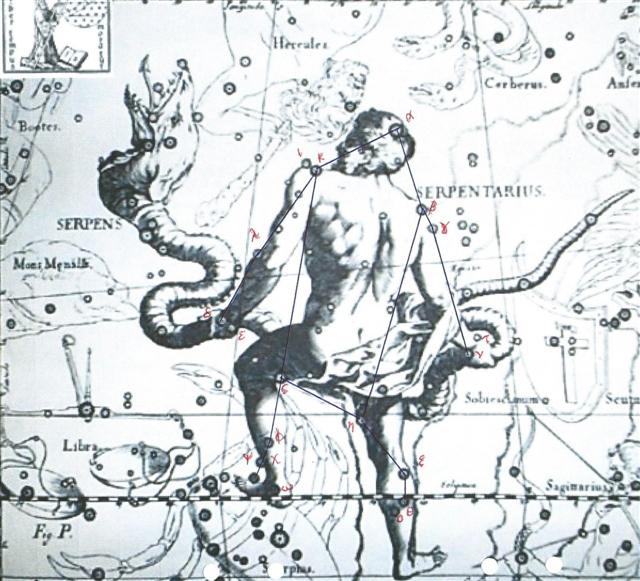
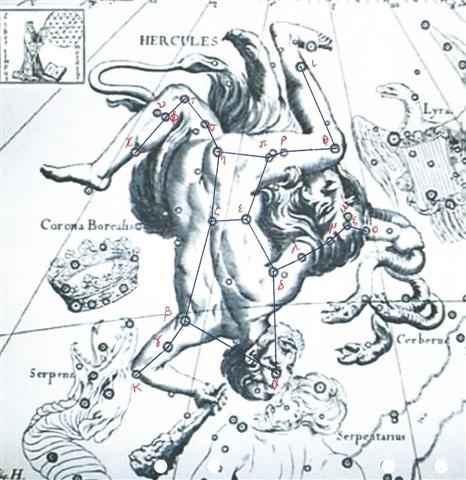 |
When once upon a time I was classifying all the rongorongo glyphs I decided
that 6
of those in the E text ought to belong in my glyph type
group named
kava:
 |
 |
 |
 |
 |
 |
|
Eb1-25 |
Eb2-6 |
Eb6-8 |
Eb6-17 |
Eb7-16 |
Eb8-31 |
Kava. 1. Sour; salty: vai kava,
saltwater, sea; te kava o te haíga, acrid
underarm smell; tagata kava - tagata kakara i te
kava, man with smelly armpits. 2. He-kava te
haha, to be thirsty. 3. To turn sour, to become
embittered, bad-tempered, exasperated (used with
manava): tagata manava kava,
bad-tempered, angry man. Vanaga. Bitter, salt;
vai kava, brackish water; hakakava, to
embalm; kavakava, acid, sharp, bitter, salt,
spiritous, vinegar, poisonous, disagreeable;
akavakava, to make sharp; hakakavakava,
to make acid. P Pau.: kava, disagreeable to
the taste; kavakava, acid, sharp. Mgv.:
kava, to be bitter, sour, acid, salt. Mq.:
kava, bitter. Ta.: ava, bitter, acid,
salt. Kavahia: 1. Comfort, comfortable, to
feast; hakakavahia, comfort, comfortable. 2.
Repulsive (of food), disgusted; hakakavahia,
repulsion. Kavakava, rib; moi kavakava,
a house god G. P Mgv.: vakavaka, the breast.
Mq.: vakavaka, vaávaá, rib. Ma.:
wakawaka, parallel ridges. We shall need all the
available material in order to determine the germ
sense of this word. Sa.: va'ava'a, the
breast-bone of a bird; fa'ava'a, the frame as
of a slate. To.: vakavaka, the side. Fu.:
vakavaka, the side below the armpit. Ha.:
hoowaa, to make furrows. In all these we may see
the idea of ridge or depression, or of both, as
primal (Rapanui, Samoa, Marquesas, Maori, Hawaii),
and as secondary the part of the body where such
appearances is common (Mangareva, Tonga, Futuna).
Churchill. Mgv.: kava, the pepper plant and
the drink made therefrom. Ta.: ava, id. Mq.:
kava, id. Sa.: 'ava, id. Ma.: kawa,
a pepper. Kavakava, a fish. Sa.: 'ava'ava,
id. Kavapui, a tree. Ta.: avapuhi, a
fragrant plant. Mq.: kavapui, wild ginger.
Sa.: 'avapui, id. Ha.: awapuhi, id.
Churchill. Mq.: ava, a small fish of sweet
water. Sa.. 'ava'ava, a small fish. Ha.:
awa, a fish. Kakava, burnt. Sa.: 'a'ava,
very hot. Churchill.
Metoro said that Eb7-16 represented the winter season (te
toga),
and it seems plausible that there was a preceding
kava period of transition from the summer season,
measuring 35 nights:
... For when the ruler drinks the
sacred offering, he is in the state of intoxication
Fijians call 'dead from' (mateni) or 'dead from
kava' (mate ni yaqona), to recover from
which is explicitly 'to live' (bula). This
accounts for the second cup the chief is alone accorded,
the cup of fresh water. The god is immediately revived,
brought again to life - in a transformed state
...
|
 |
34 |
 |
|
ka hakatu ma te rima |
te toga |
|
Eb6-17 (326 +
201 = 527 = 628 - 101) |
Eb7-16
(236 → 8 * 29½) |
|
Oct 24 (297 → *360 - *184) |
Nov 28 (332 = 297 + 35) |
| April 25 (115) |
May 30 (150 = 115 + 45) |
|
ρ
Ceti (35.4)
*360.0 = *35.4 - *41.4 |
No star
listed (70) |
 |
|
... On the twenty-fifth day of the
first month (Vaitu Nui), Ira and Makoi
set sail; on the first day of June ('Maro'), the
bow of Ira's canoe appeared on the distant
horizon, came closer and closer on its course, and
sailed along, and finally (one) could see the (new home)
land ... [E:17] |
Perhaps Plowing was due to begin when the Sun
stood at ζ Herculis, i.e. at the forehead of
the old Lion hanging at the left elbow as Hevelius has
visualized it - presumably because of such illustrations
of Orion as below:
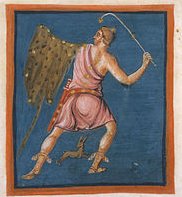
|
Manacle |
ziqq |
Phoenician zayin |
 |
Greek
zeta |
Ζ (ζ) |
|
...
Zeta (uppercase Ζ,
lowercase ζ;
Greek: ζήτα
... is the sixth letter of the Greek
alphabet. In the system of Greek numerals,
it has a value of 7. It was derived from the
Phoenician letter Zayin. Letters that
arose from zeta include the Roman Z and
Cyrillic З ...
Zayin
(also spelled Zain or Zayn or
simply Zay) is the seventh letter of
many Semitic abjads ... It represents the
sound [z]. The
Phoenician letter appears to be named after
a sword or other weapon. (In Biblical
Hebrew, 'Zayin' means sword, and the
verb 'Lezayen' means to arm. In
modern Hebrew, 'zayin' means penis
and 'lezayen' is a vulgar term which
generally means to perform sexual
intercourse and is used in a similar fashion
to the English word fuck, although the older
meaning survives in 'maavak mezuyan'
(armed struggle) and 'beton
mezuyan' (armed, i.e., reinforced
concrete). The Proto-Sinaitic glyph
according to Brian Colless may have been
called ziqq, based on a hieroglyph
depicting a 'manacle'.

 |
Such ideas could explain the right part of the glyph
placed 8 synodic months counted from the beginning of side b:

Because it looks like the 'horn' (koanga)
of the Bull of Heaven:
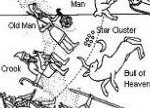
... The
Maori recognized two main divisions of the year: winter
or takurua, a name for Sirius which then shone as
morning star, and summer, raumati or
o-rongo-nui, 'of the great Rongo', god of
agriculture. They occasionally
recognized spring as the digging season koanga,
from ko, the digging stick or spade. The autumn
or harvest season was usually spoken of as ngahuru,
'tenth' (month), although it was considered to include
also the last two months of the year. Mahuru was
the personification of spring
...
... The
Maori term o-rongo-nui was undoubtedly applied to
summer as in phrases such as te ra roa o te marua-roa
o te o-rongo-nui, 'the long days (ra, Sun) of
the summer solstice'; but it was also extended to cover
the months of spring and early summer as well as those
of late summer and fall. This
is evident from such statements in the legends as: 'That
bird is a cuckoo, and that is the bird of matahi o te
tau o o-rongo-nui', i.e., of the first month of the
summer season, although in New Zealand the cuckoo, like
the robin in the north temperate zone, was the harbinger
of spring. Also, 'Hine-rau-wharangi' was born in
the month Ao-nui (first light) of the
o-rongo-nui'. Among the Takitumu tribe
Ao-nui was the name for May-June, the first month of
the year which belonged to late fall or early winter.
Rongo
was the name for June in the Chatham Islands and began
the Moriori year ...
... The canoe continued its
exploration and in a sweep sailed on to Hanga Te Pau.
They went ashore and took the food with them. They
pulled the canoe onto the beach and left it there.
Ira sat down with all the other (companions) and
spoke to Makoi: 'You shall mark the land for me
and make it known (by its names)!' After that, Ira
spoke these words: 'This is the digging stick (? ko
koko), Kuukuu.
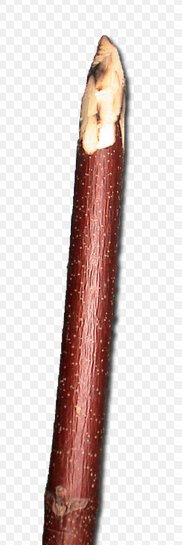
... You shall work the land for me and
plant the yam roots!' ... [E:18]
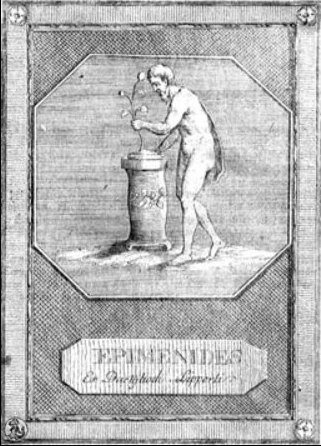
|
HAU MAKA |
HUA TAVA |
|
Ira |
Raparenga |
Ngukuu |
Ringiringi |
Nonoma |
Uure |
Makoi |
|
Sun |
Moon |
Mars |
Mercury |
Jupiter |
Venus |
Saturn |
October 25 (half a year after April 25),
we have found, seems to
have been connected with Fomalhaut culminating:
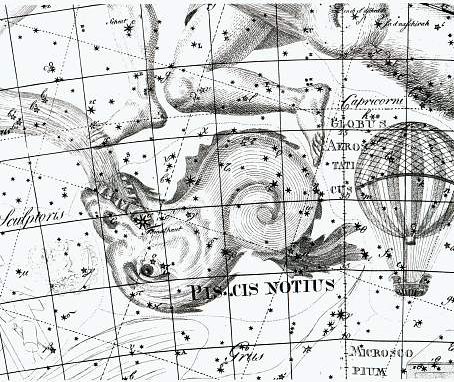
|
 |
*1 |
 |
|
Gb8-2 (229 + 214 = 443 = 15 * 29½ + ½) |
Eb6-19 (326 +
203 = 529) |
|
Oct 25
(*218) |
Oct 26 (299 →
529 - 230) |
|
FOMALHAUT
(Mouth of the
Fish, 1.17, 29° 53′ S) |
FUM-AL-SAMAKAH
(Mouth of
the Fish, 4.48, 03° 49′ N) |
|
→
DEC 29 |
→
DEC 30 (364 → 299 + 65) |
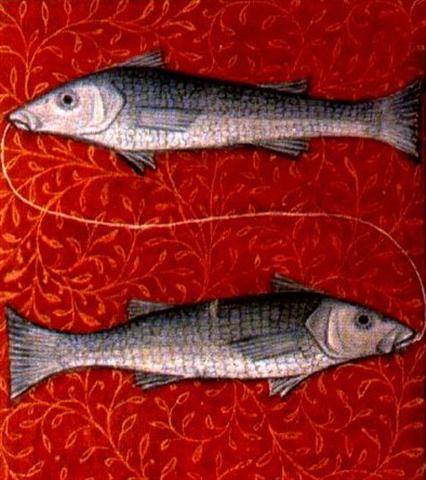 |
November 28 (148 + 182 = 332) was half a year after
May 18 (148), and on Hawaii they connected November
28 with the beginning of their Lono
(agricultural) cycle.
... The correspondence between the
winter solstice and the kali'i rite of the
Makahiki is arrived at as follows: ideally, the
second ceremony of 'breaking the coconut', when the
priests assemble at the temple to spot the rising of the
Pleiades, coincides with the full moon (Hua
tapu) of the twelfth lunar month (Welehu). In
the latter eighteenth century, the Pleiades appear at
sunset on 18 November. Ten days later (28 November), the
Lono effigy sets off on its circuit, which lasts
twenty-three days, thus bringing the god back for the
climactic battle with the king on 21 December, the
solstice (= Hawaiian 16 Makali'i). The
correspondence is 'ideal' and only rarely achieved,
since it depends on the coincidence of the full moon and
the crepuscular rising of the Pleiades ...
Between Furrow and Frond the Tail (De-Neb,
Da-Nab) was de-voured by Nabu (Mercury):
... Ganz ähnlich is der Name 'Gott von Duazag'
des Gottes
Nabū ... zu erklären. Er
bezeichnet ihn als den Gott des Wachtstums, welches als
aus dem Osten stammend betrachtet wird, weil die Sonne,
die das Wachstum bringt, im Osten aufgeht. Dass
aber Nabū als Ost-Gott aufgefasst wurde, hängt
damit zusammen, dass sein Stern, der Mercur, nur im
Osten oder Westen sichtbar ist ...
The synodic cycle of Mercury
measured a fraction more than 115 days and April 25 was
day 115 (= 84 + 31).

|


















